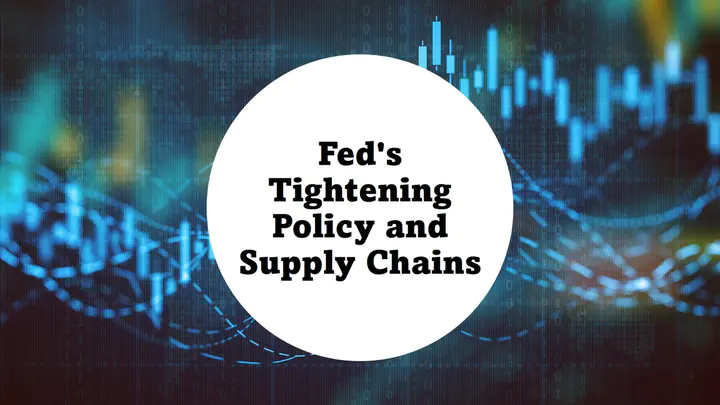Fed's Monetary Policy Tightening and Its Implications for Supply Chains

The Federal Reserve’s Monetary Policy Tightening and Its Implications for Supply Chain Management #FedPolicy #SupplyChainResilience ⛓️
The Federal Open Market Committee’s recent decision to maintain elevated interest rates signifies a significant shift in the economic landscape. This post will explore the potential ramifications of this policy tightening on #supplychains and offer strategic considerations for #financialrisk #mitigation.

Fed Chairman: Jerome Powell, Image Credits: Money.com
The Impact of Higher Interest Rates on Supply Chains
- Increased Borrowing Costs: Elevated interest rates translate into more expensive financing for inventory acquisition, infrastructure upgrades, and supplier credit. This can constrain operational cash flow and limit investments in supply chain optimization initiatives (➡️). For instance, a small furniture manufacturer planning to upgrade its warehouse automation system to improve efficiency might now have to postpone the project due to the higher borrowing costs associated with a loan.
- Potential Demand Contraction: Higher interest rates often have a dampening effect on consumer spending, potentially leading to a decrease in product demand (️➡️). This can disrupt meticulously planned production schedules and necessitate adjustments to inventory levels. Imagine an electronics retailer that based its inventory forecast on pre-rate hike projections. They might now need to implement price reductions or promotions to clear excess stock due to a decline in consumer spending power.
- Supplier Pressures: Like your own organization, suppliers may face tighter budgetary constraints and prioritize higher-margin products. This could potentially impact your access to critical materials and components (➡️❓). A just-in-time manufacturer relying on a single source for a specific chip might face delays or even shortages if that supplier prioritizes fulfilling orders for larger clients with whom they can command higher prices.
Strategic Considerations for Supply Chain Managers
- Scenario Planning: Employing robust scenario planning techniques can provide valuable insights into how diverse interest rate environments might influence your supply chain. This proactive approach allows for the identification of potential bottlenecks and the development of contingency plans to mitigate them (➡️).
- Enhanced Negotiation Strategies: Refining negotiation skills to secure more favorable terms with suppliers can be instrumental in ensuring continued access to critical materials, particularly in an environment of potentially declining demand (➡️).
- Inventory Optimization: Implementing leaner inventory management strategies while maintaining sufficient safety stock to prevent stockouts is crucial. Leveraging data analytics to identify slow-moving inventory can facilitate cost savings on storage (️➡️).
- Collaborative Partnerships: Open communication channels with suppliers and customers are paramount. Sharing revised forecasts and fostering collaboration will strengthen collective resilience in the face of potential economic slowdowns (➡️).
Conclusion
The Federal Reserve’s monetary policy tightening represents a significant development for the global economy. By remaining informed, proactively adapting strategies, and cultivating solid collaborative relationships, supply chain managers can ensure their operations maintain the necessary resilience to navigate these evolving economic conditions (➡️).